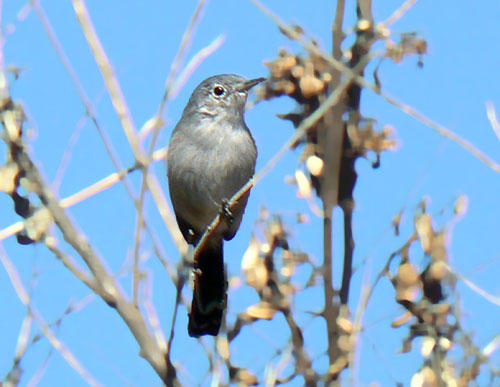Fighting the Orange County toll road
Audubon California has been working with several of its local chapters and a number of other environmental organizations to defeat a proposed extension of the Orange County Foothill-South (241) toll road. Based on our detailed review and long history of engagement in the project, the potential impacts to birds, other wildlife, and important habitat are unacceptable.

In February of 2008, the California Coastal Commission struck a major blow against the toll road extension when it ruled that the proposal was inconsistent with the Coastal Zone Management Act. In the years since, however, the Transportation Corridor Agencies, which wants to build the new toll road extension, has continued to press for permission to build the extension.
Habitat impacts
If approved, the project would cut through the Southern Orange County Important Bird Area (IBA), one of about 150 sites in California designated by Audubon according to a scientific analysis of avian values as part of a global ornithological effort led by Birdlife International. Of these 150 IBAs, the Sourthern Orange County site ranks among the most important due to the abundance of sensitive bird species found there, as well as the unique nature of the habitat in this area. Of particular importance is the IBAs coastal sage scrub habitat, which is increasingly rare and under threat from development.
The proposed project would also run through a large portion of the 1,200-acre Donna O’Neill Conservancy, created in 1990 to mitigate development in the region. This privately-held parcel is home to 200 species of plants and animals, and more than 6,000 Coast Live Oaks.
Threats to threatened or endangered bird populations
The proposed project would harm a number of threatened or endangered bird populations, including critical populations of the San Diego Cactus Wren and the Coastal California Gnatcatcher. Sensitive species such as the Southwestern Willow Flycatcher and Grasshopper Sparrow still maintain small breeding populations here as well. In addition, a diverse wintering raptors community, including Burrowing Owls have been nearly extirpated from the coast of southern California. The Southern Orange County IBA is also of critical importance for the few remaining pairs of Golden Eagles left in Orange County, and it also contains alkali marshes along Chiquita Canyon that support hundreds of Tricolored Blackbirds.
A more complete list of the sensitive bird species occurring within the entire Southern Orange County Important Bird Area includes:
Allen’s Hummingbird
Least Bittern
Northern Harrier
Golden Eagle
Western Snowy Plover*
California Spotted Owl
Burrowing Owl
Long-eared Owl
Southwestern Willow Flycatcher*
Loggerhead Shrike
Least Bell’s Vireo*
Cactus Wren
Coastal California Gnatcatcher*
Swainson’s Thrush
Yellow Warbler
Yellow-breasted Chat
Sage Sparrow
Grasshopper Sparrow
Tricolored Blackbird
Yellow-headed Blackbird
White-tailed Kite
*Threatened or endangered species
Threats to sensitive wildlife species
The project would also increase threats to a number of other highly sensitive species and protected species, including the Pacific pocket mouse, the arroyo toad, tidewater goby and the Southern steelhead.
The project presented an unacceptable use for state park land
The project would build over 60 percent of San Onofre State Beach, an important unit of the California State Parks system, and this destruction would likely have led to the abandonment of the popular facility. Audubon members and thousands of others from Southern California and beyond find recreation and enjoyment at this unique park. The park and the surrounding environment is a valued place for birdwatching, hiking, swimming and other outdoor activities. Introducing the noise, congestion and habitat disturbance through the construction and operation of the toll road would have rendered the park useless as a recreational resource.
How you can help, right now
Get Audubon CA in Your Inbox
Our newsletter is fun way to get our latest stories and important conservation updates from across the state.
Donate to Audubon
Help secure the future for birds at risk from climate change, habitat loss and other threats. Your support will power our science, education, advocacy and on-the-ground conservation efforts.
HOTSPOT: Flyover of California's Birds and Biodiversity
California is a global biodiversity hotspots, with one of the greatest concentrations of living species on Earth.




